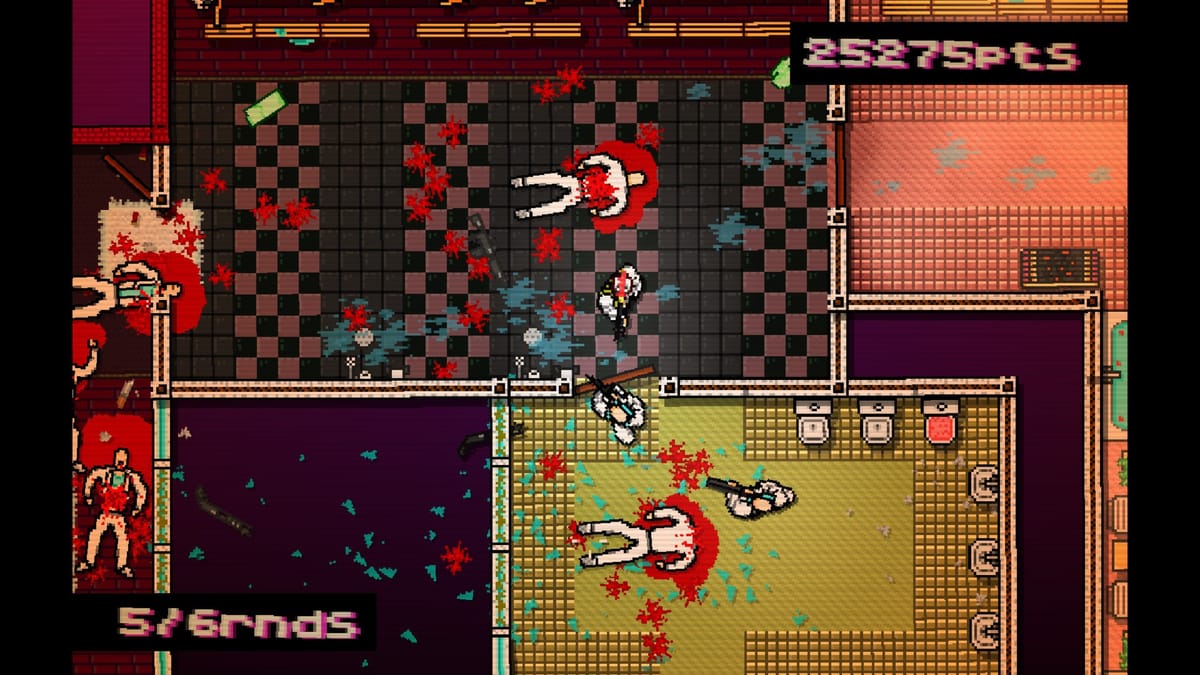
There’s no arguing that this week is a stacked week in gaming, as many releases have hit that are creating a great deal of buzz in the gaming community. Today, two very different games are on the digital shelves, with two very different stories told very differently. Yet they are both emblematic of a greater movement in gaming, or what I would call the postmodern era of games. Ori and the Blind Forest, and Hotline Miami 2: Wrong Number, are both highly postmodern titles.
Postmodernism is a reaction to the times, a movement that originated in the early 20th century, driven by names such as Vonnegut and Pynchon, Gaddis and Nabokov. It was about examining the way in which we consume media, and challenging the norms of the time. Authors like Cormac McCarthy would forego attributing bits of conversation to specific characters, in order to create a true sense of conversation. Breaking the rules and deconstruction are staples of postmodern works.

Ori and the Blind Forest opens slowly, but in a grand manner. You are eased into the world, which uses hand-painted aesthetics uncommon to gaming. You are introduced to two characters, Ori and a silent companion who takes Ori in. Through no spoken dialogue, you watch the two grow together, childlike being and stoic protector. You may be reminded of Up, in the presentation of it, and certainly in the emotion that follows.
It’s striking how much that opening accomplishes with so little. Within a few minutes, a strikingly strong connection has been created between two characters, and after the climax of that short intro, a significant emotional investment has been made. Even the use of little touches, like the character struggling to move when you command it to, is more effective in connecting emotion to input than most. It is strange to think that a game can exceed so well at storytelling in such a minimalist manner. When so many games use giant setpieces and grand scale, Ori tells you a story in a short time, utilizing simple input and visual cues.

Hotline Miami 2: Wrong Number strikes a very different chord. Brutal, primal, grim and dark. Hotline shines a light on the darker parts of gaming, putting in on a pedestal and forcing you to see it. The first game had the infamous “Do you like hurting people?” line; Wrong Number takes it a step further, directly addressing the idea that this violence is sought after, and is the “reason” for playing, what keeps you, the player, going through each mission.
And it succeeds. Hotline’s violence is cathartic in a way many games hope to achieve, boiling entire buildings of bloodshed and guts down to quick bursts, frantically slamming the R button to reboot it all – and then turning that same “reset” button on its head to drive the impact of a situation home. Wrong Number’s story is told in vignettes, out of order and disjointed, in a manner not unlike Pulp Fiction. You play as a host of disturbed characters, from a homicidal maniac who hears the first title’s phone ringing in his head to a group of “fans,” emulating the brutal murders of the first.

The game is self-referential, and uses simple aesthetic choices like the wobbling of the screen and a VCR-esque pause screen to create a sense of disjointedness, blurring the line between game and player. The aim is to make you lose yourself in a haze of bloodshed, spurred on by the thumping music and fast bursts of combats, and then it hits you in a moment I like to refer to as the “walk of shame.” You have to retrace your steps to end the level, walking over the dead bodies you’ve mangled and the pools of blood. As you do, the rooster’s question still hangs over your head, though in Wrong Number it’s more of an assertion: “You really do like hurting people, don’t you?”
Games in the past commonly existed in vacuum. They were an experience that the player enjoyed, but never addressed what the player brought to the game. In postmodern gaming, the player and the game create an exchange, and games can address not just that they’re being “played,” but what the player brings to the exchange between the two.

Blurring the line between media and consumer, utilizing input to create emotional ties, addressing the player and calling them out for engaging in activity facilitated by the work at hand… games are developing more and more ways to further the methods used to tell stories, to break the rules and throw out the script. By creating experiences like these, our medium continues to develop and evolve, and we move beyond the simple A and B. It forces us to examine ourselves as players, and how the game is affected by our presence, rather than in a vacuum. Postmodernism is alive and well in gaming, and it’s changing the way we play for the better.